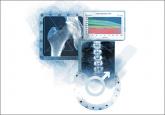Article

Osteoporosis: What About Men?
- Author:
- Bryan Farford, DO
- Jonathan Balog, DO
- Kensler Dawson Jackson, MD
Men sustain up to 40% of osteoporotic fractures, with potentially fatal results. But because osteoporosis is largely viewed as a women’s disease,...
Article

Osteoporosis: What about men?
- Author:
- Bryan Farford, DO
- Jonathan Balog, DO
- Kensler Dawson Jackson, MD
Men sustain up to 40% of osteoporotic fractures, with potentially fatal results. But because osteoporosis is largely viewed as a women’s disease,...
